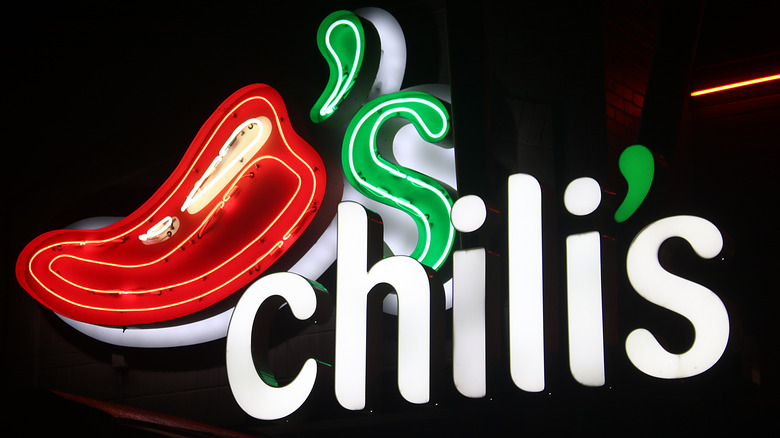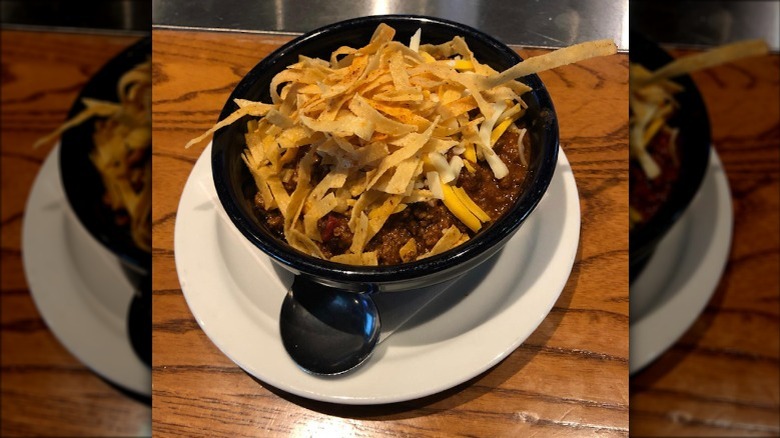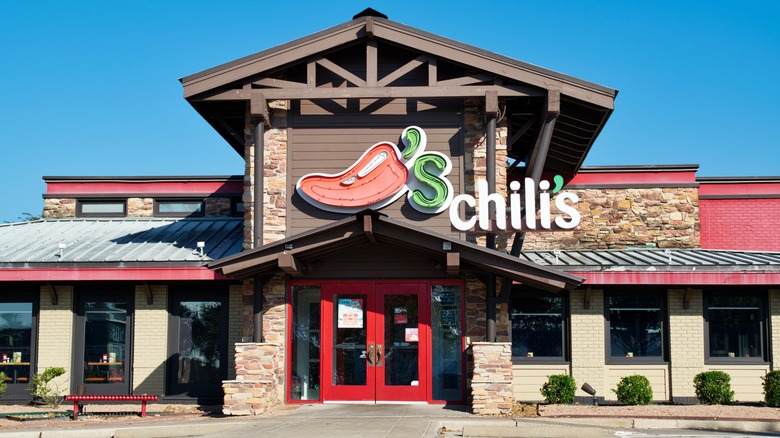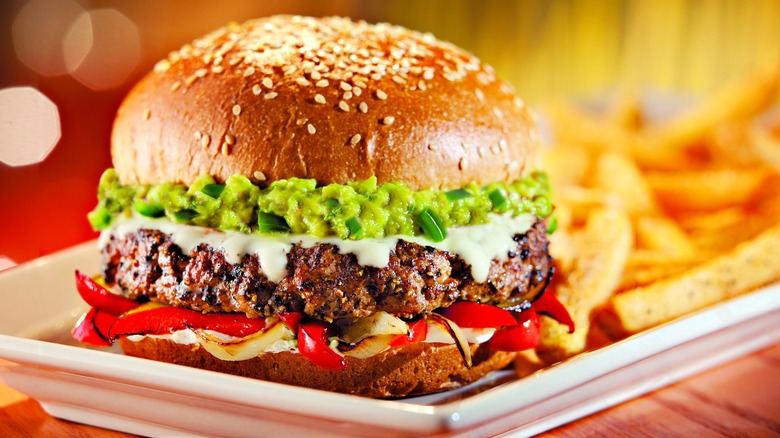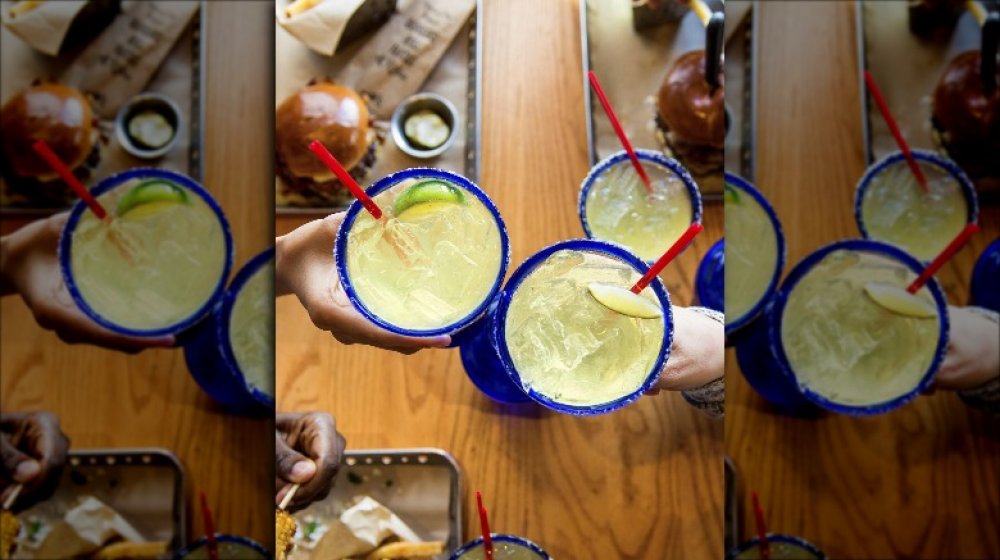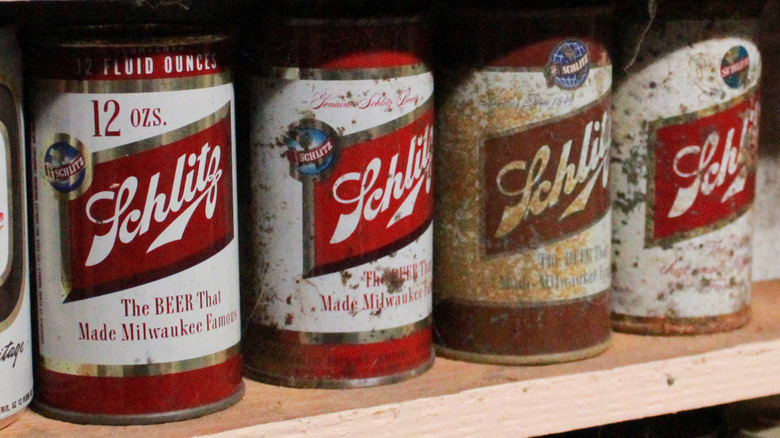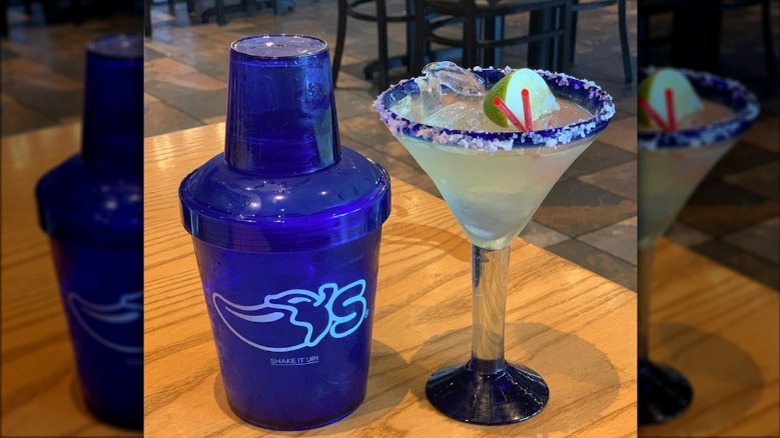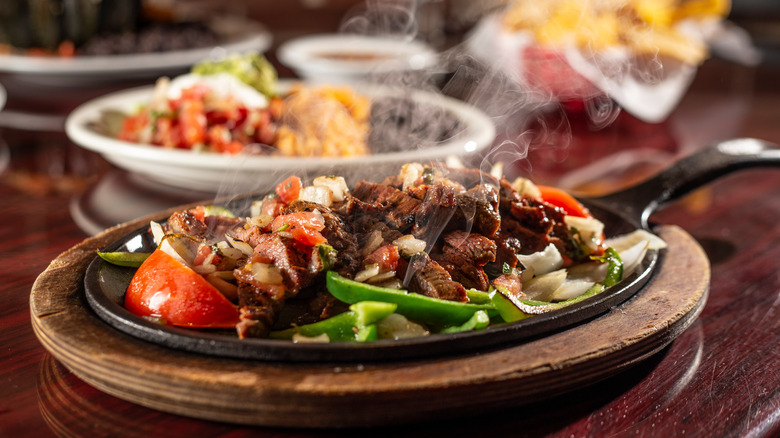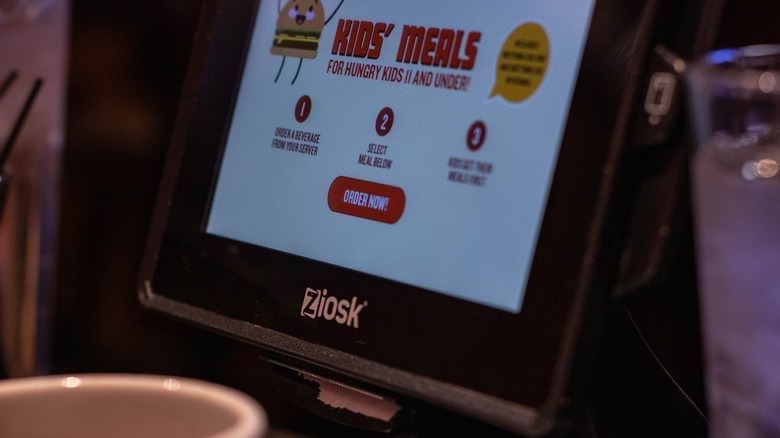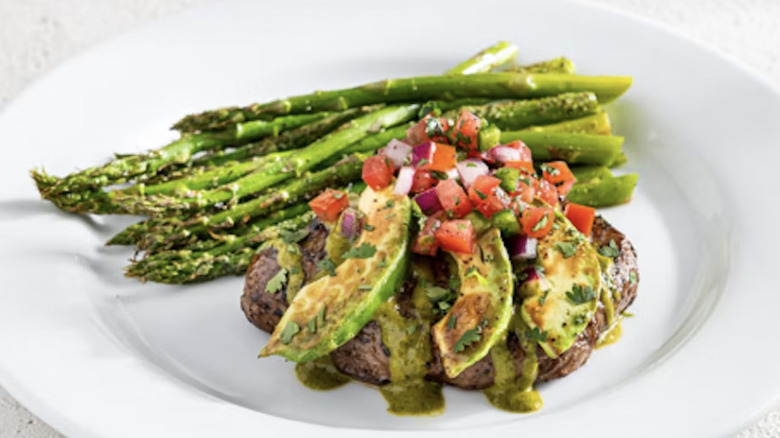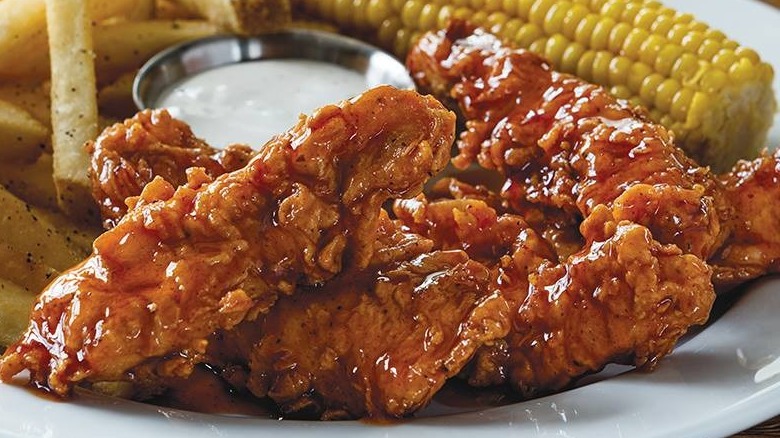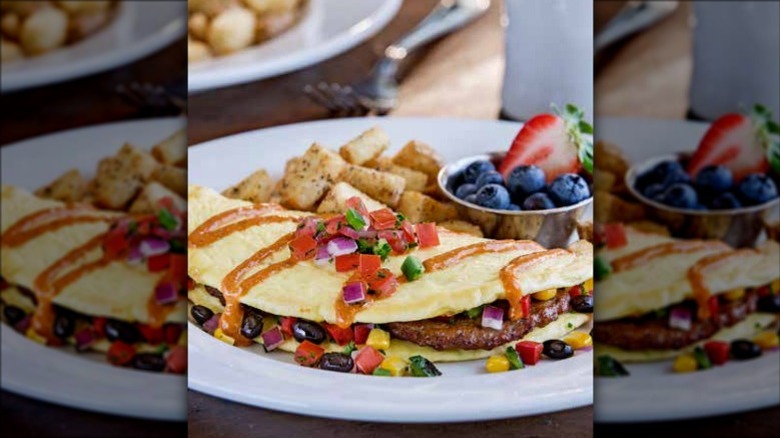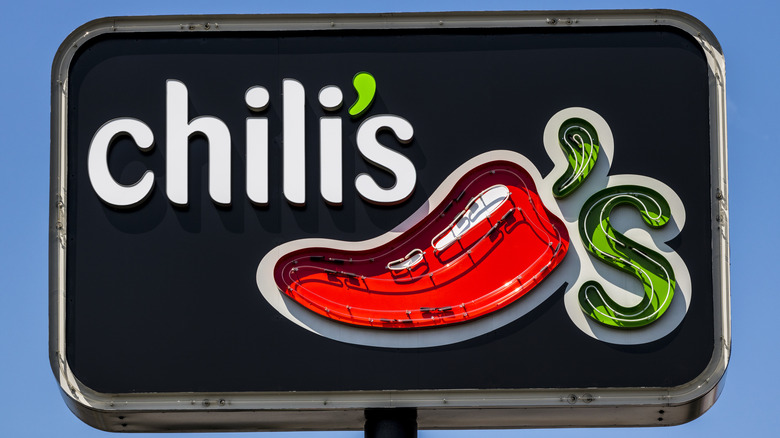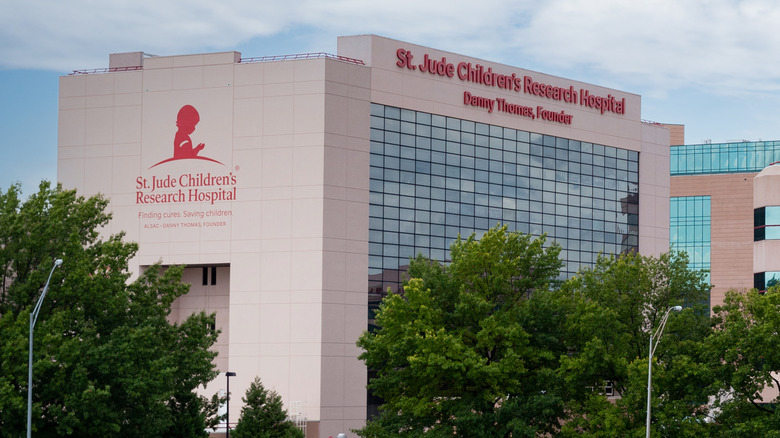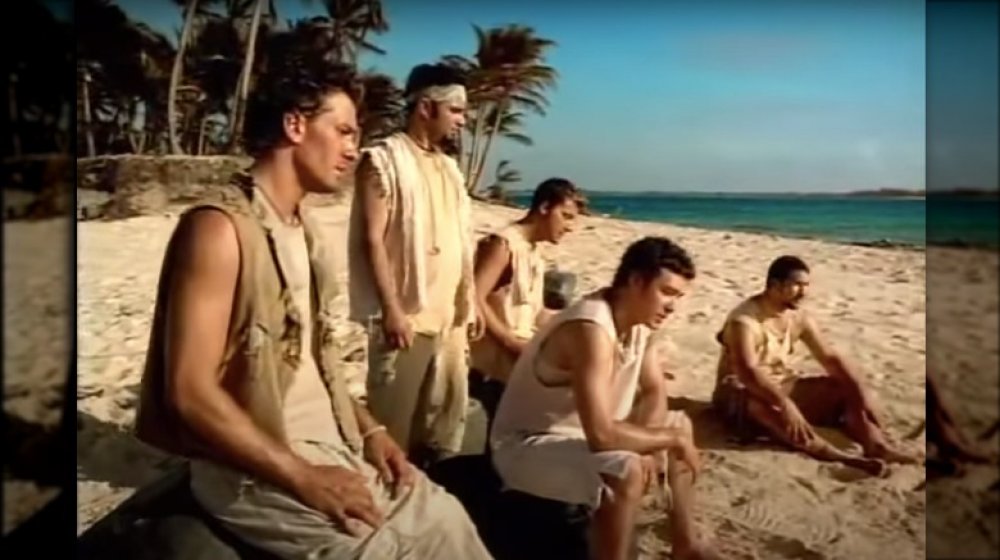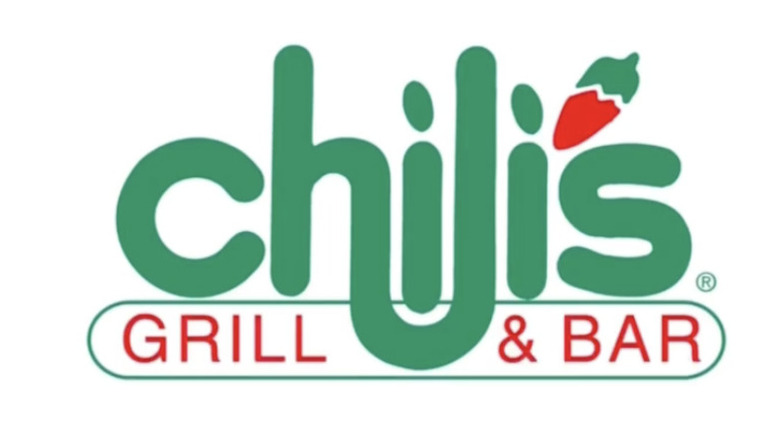Things Only Regulars Know About Chili's
Chili's Grill & Bar holds a special place in the hearts of many, whether for the food, drinks, or pop culture references that have spun from it. What a lot of people may not be aware of, however, is that the southwestern-style restaurant was something of a unicorn when it first opened in 1975 — there weren't a lot of casual dining restaurants on the scene at the time, and because of that, Chili's quickly grew in popularity, with the second location opening up within the year, and the growth only escalating after that.
Nation's Restaurant News reports that Chili's was within the top 20 chain restaurants in the United States in 2022, which is no surprise given the love and loyalty that the franchise inspires in the hearts of many. The restaurant has come a long way since its inception and now boasts a varied menu that offers tacos, burgers, fajitas, and those oh-so refreshing margaritas. As of 2022, there are nearly 1,600 Chili's locations worldwide that can be found in more than two dozen countries (via Brinker International). In other words, Chili's has a lot of devoted fans who just can't get enough baby back baby back baby back ribs, Tex-Mex treats, and more. Here's the inside story on the phenomenally popular chain restaurant.
Why is it called Chili's?
Chili is still on the menu at Chili's more than four decades after its founding and massive expansion from a single location in Texas, where chili is a culinary and cultural institution (via Texas Monthly). The restaurant chain was named after the treasured Texan meaty stew, albeit indirectly and with some innate marketing savvy. Co-founder Larry Lavine had worked as a band booker and ran a steakhouse with another restauranter, Malloy Buckner, and when opening a new joint in 1975, he thought about the first Terlingua Chili Cook-off, which he'd attended in 1967, according to the Lake Highlands Advocate. He liked the idea of a casual, social restaurant with an easygoing vibe and southwestern food (like chili!). And Lavine decided to name the restaurant after one of those foods, which they put right at the top on the menu. "It was something people would talk about," Levine told WFAA Dallas. "People don't talk about spaghetti and meatballs."
The first Chili's opened in Dallas, Texas
These days, there are plenty of restaurants like Chili's across the American culinary landscape categorized as casual dining establishments, where come-as-you-are customers are seated as in a formal restaurant but served large portions of informal, populist fare relatively quickly and at prices more in line with fast food and fast casual chains. However, this was a groundbreaking concept that Chili's helped pioneer when the first location opened in Dallas, Texas, in the 1970s. "We were one of the first early casual dining restaurants," Chili's co-founder Larry Lavine told WFAA Dallas.
The timing was fortuitous, because in 1971, the state of Texas had just legalized the sale of alcoholic beverages in restaurants. Chili's, pairing burgers, chili, and Tex-Mex food with beer and margaritas, benefited from that shift when it opened for business in 1975 with a single outpost on Greenville Avenue in Dallas. The building that housed the eatery was a former post office. The second Chili's, up and running in Houston in 1976, was also a conversion — that building used to hold a flower shop.
The original menu was a lot smaller
Today, the Chili's menu is as big as some of the heaping burgers and expansive platters it serves up, offering customers page after page of sandwiches, Tex-Mex favorites, ribs, fish, chicken, pizza, as well as appetizers, cocktails, desserts, salads, party-size troughs, and more. But in the beginning, the offerings at Chili's were much more humble and straightforward.
According to an original menu from the first ever Chili's, which opened in Dallas back in 1975, the choices were as casual as the vibes (via the Lake Highlands Advocate). The menu consisted of a single page, enough to list three chili options, six burgers, soft tacos, chips and salsa, and three alcoholic beverages. Chili's Own Texas Red Chili, with or without beans, and with or without corn chips, cheese, and onions, cost $1.50. The Oldtimer burger (with mustard, lettuce, tomato, onions, and pickles) also ran $1.50, with cheese or chili costing an additional 15 cents. A side of fries or an order of chips and hot sauce set customers back 50 cents, a plate of tacos stuffed with chili and cheese rang up at $1.50, and a frozen margarita went for $1.50, twice the price of a sangria or cold beer.
The original menu didn't have ribs
When Founder Larry Lavine opened up the first location in Dallas, Texas, the menu felt like the perfect starting point for what would later become today's menu (via The Daily Meal). Lavine had been inspired by the Terlingua Chili Cookoff, and not only included his very one chili recipe but burgers and tacos as well.
According to a Thrillist report, the menu offered three kinds of chili, six different kinds of burgers, homemade fries, tacos, frozen margarita, homemade sangria, and an icy cool frosted mug of beer (the listed price for each drink was under $2). Although small, it was a robust and hearty menu that attracted enough attention that Lavine decided to open up a second location. Today's menu offers diners their famous ribs, Southwestern eggrolls, fajitas, soups, salads, seafood, an expanded alcoholic beverage list, and a Guiltless menu for more health-conscious customers (via Chili's).
Chili's only served one beer for a while
As a major restaurant chain in the 2020s, Chili's serves up a wide array of alcoholic beverages across its hundreds of locations, including margaritas, mixed drinks, and a number of beers, both bottled and on draft, which varies from outlet to outlet. That's a long and fruitful evolution from when the company started out with one restaurant in 1975. According to the Lake Highlands Advocate, the first Chili's menu offered only three boozy drinks: a frozen margarita, house-made sangria, and a "Frosted Mug of Beer."
The one-page bill of fare didn't require any more space to list those beer options because Chili's served exactly one kind of beer at the beginning, according to the Dallas Morning News. That beer was Schlitz, the classic American-style light lager brewed in the U.S. since 1849. According to WorthPoint, this was because of a financially agreeable situation between the young and barely going restaurant chain and the beer-maker. Schlitz was the only beer company that would supply the bar and grill while also offering a credit line, taking a chance on a non-established and growing restaurant company.
Chili's serves up a lot of margaritas
Chili's is officially known as Chili's Bar and Grill, meaning it serves a menu of alcoholic drinks and cocktails almost as extensive as its food menu. In keeping with the Southwest-inspired theme, Chili's offers many margarita-esque frozen drinks in multiple flavors, including a rotating "Margarita of the Month." But there's no drink more signature to Chili's than its signature drink, the Presidente Margarita, a beverage the company considers so vital to its success that it trademarked the name. It's made with Luanzul tequila, Citronge orange liqueur, and E&J brandy that is hand-shaken exactly 25 times. Besides the classic lime flavor, it's also available with mango or strawberry.
The drink is also crucial to Chili's revenues because the company's thousands of outlets sell a great deal of Presidente Margaritas. Introduced in 1994, Chili's celebrated the 21st birthday of the drink customers have to be 21 to purchase by marking down the cost to just $5 and revealing in a press release that the company serves 135,000 gallons worth of the drink at its restaurants each year. That works out to about four million individual shakers full of Presidente Margaritas.
You may succumb to the fajita effect
That catchy TV commercial jingle about baby back ribs notwithstanding, Chili's signature menu item is probably its fajitas. As is the case at thousands of Tex-Mex and Mexican-inspired restaurants around North America, a Chili's server emerges from the kitchen bearing a plate of fajitas — marinated, grilled meat and spicy vegetables — that loudly and pleasantly sizzle as they find their way to the person who ordered them.
That heralding of the arrival of fajitas is a micro-marketing tactic, and one that works very well. Chili's has always delivered fajitas to diners in such a way. According to Joel Beckerman and Tyler Gray's sound-science book "The Sonic Boom," this became the instigating factor in a process known internally as "the fajita effect" (via Medium). As a server moved through the restaurant with the appetizingly sizzling fajitas, the kitchen would be instantly inundated with more fajita orders from admiring diners. According to Redditors with firsthand knowledge of Chili's operations, setting the fajita effect into motion hinges on a particular process. When the fajitas are ready to be served, they're squirted with an oil-based concoction that makes the dish boil, steam, and sizzle to appear as fresh and hot as possible.
Those tablets on Chili's tables helped grow the business
Automation and digitization can appear in many forms in the restaurant business. Servers may enter customer orders in a computer that sends them into the kitchen, or diners can use smartphone apps to pick up food or set it up for delivery. One of the more recent technology developments in this realm cuts out servers altogether — table-top, internet-enabled tablets from which customers can directly order food.
According to The Atlantic, Chili's had placed upwards of 45,000 touchscreen tablets (in cooperation with restaurant tech company Ziosk) in more than 800 locations by 2014. In addition to playing games and quickly settling up checks, the tablets also allow customers to order food at their convenience. The results of this roll out were very pleasing to Chili's brass. According to the company, dessert and appetizer sales both increased 20 percent in stores with tablets installed. Ziosk research indicated that not having to wait for an in-person server led to more impulse buys of those extra courses.
What Chili's menu item is the healthiest?
Seemingly aware and acknowledging of the many high-calorie and fat-laden items that categorize its menu, Chili's introduced a new menu section in 1993 called the Guiltless Grill (via Chief Marketer). It features a handful of healthier entrees with far less calories, fat, and saturated fat than Chili's more famous plates of burgers, ribs, and fried chicken dishes. Leaner beef cuts and naturally leaner proteins like chicken and fish define the Guiltless Grill, which also employ the use of spices and vegetables to add flavor that would ordinarily come from cheeses, oils, and thick sauces. The healthiest overall meal platter on the Chili's menu is also the healthiest option amongst the Guiltless Grill selections.
That would be the Classic Sirloin with Grilled Avocado, in the smaller, 6-ounce steak choice. The low-fat beef cut comes topped with a spicy citrus sauce, cilantro, and sliced avocado, along with a side of roasted asparagus spears. The whole thing comes in at 340 calories, 17 grams of fat, and 13 grams of carbohydrates.
And which one is the least healthy?
The Chili's menu is loaded with salty, fatty, cheese-laden comfort food, and the chain makes no promises about the healthiness of its offerings. Its products are belly-filling, celebratory, all-American pub food classics, and are probably no nutritionist's idea of wholesome or nutritionally legitimate. One of the most unhealthy individually portioned entrees in the entire Chili's lineup of huge sandwiches and platters is the Crispy Honey-Chipotle Chicken Crispers meal. A large serving size of the meal — consisting of 12 boneless chicken strips that are breaded, fried, and swimming in a sugary and spicy honey-chipotle glaze, along with a heaping helping of French fries, some buttered corn on the cob, and a side of ranch dressing for dipping — packs a massive 3,190 calories and 153 grams of fat, of which 26 grams is of the artery-clogging saturated fat variety.
That one meal well exceeds the USDA's calorie intake recommendations for an entire day for people of any age, while it's more than double the total saturated fat limit, according to the American Heart Association. Furthermore, the FDA suggests Americans limit their daily intake of sodium to 2,300 milligrams. The Crispy Honey-Chipotle Chicken Crispers meal will get a person there and then some — it contains 10,990 milligrams worth of salt.
Some Chili's locations serve breakfast
Breakfast foods aren't usually associated with a place like Chili's, what with its towering, beefy burgers, sizzling fajita platters, and breaded chicken strip dinners not exactly meshing with the traditional American morning fare of eggs and bacon, cereals, and danishes. And yet, the chain has experimented with an expansion of both its menu and its hours, entering into the restaurant breakfast game in 1990, per Gerben Trademark Library. The items offered on Chili's breakfast menu include familiar diner items like waffles, pancakes, French toast, bacon and eggs, and omelettes.
Chili's kept serving breakfast for nearly three decades, with it disappearing almost completely chain-wide by 2018. A handful of Chili's locations still serve breakfast to this day, however, especially in places where time is a bit more flexible of a concept, and where customer need for morning-time comfort food isn't strictly relegated to the early a.m. The Chili's located inside of Chicago O'Hare International Airport prominently features a "Rise and Shine" section on its menu. Up for sale until 10 a.m. each day, customers can enjoy items like the Sunrise Burger (a cheeseburger with eggs and bacon), a breakfast tacos platter, pancakes, and the Southwestern Omelette.
Who owns Chili's today?
There are more than 1,220 Chili's locations in the U.S. as of 2022. There's at least one Chili's outlet in every state except Oregon, with 220 in Texas alone (via ScrapeHero). That makes sense, as the very first foundational Chili's Grill and Bar opened in Dallas, Texas, back in 1975 by restaurateur Larry Levine, per Funding Universe. In less than a decade, the informal, Tex-Mex-meets-American food concept had proved popular enough that Levine had expanded to nearly two dozen locations.
In 1983, Levine sold the whole Chili's operation to Norman E. Brinker, a veteran of the food service industry who'd helped grow Jack in the Box, started Steak and Ale, and developed Bennigan's into a prominent chain restaurant (via The New York Times). Brinker went to work for Pillsbury's restaurant operation when he sold his portfolio of eateries to the grocery company. By the early '80s, he'd left Pillsbury to form another independent restaurant group, and he started with Chili's. At the time Brinker bought Chili's, it was more than $8 million in debt. Within a few years, Brinker would greatly expanded Chili's into a coast-to-coast restaurant chain under a new parent company, Brinker International, a holding group that has also operated other big restaurant brands such as On the Border Mexican Grill and Cantina, Romano's Macaroni Grill, and Cozymel's Coastal Mexican Grill (via Funding Universe).
Chili's has donated a lot of money to St. Jude's Children's Research Hospital
Brinker International, Chili's parent company, supports several charitable causes — most publicly, prominently, and prolifically St. Jude's Children's Research Hospital, the Memphis medical facility founded by actor Danny Thomas that treats and works toward cures for numerous serious pediatric diseases. The hospital is known for never denying treatment to any child who needs it and also refusing payment from patients' parents. It operates on grants and donations and a big part of its operating budget comes from Chili's.
One way Chili's organizes funds is through its Create-A-Pepper program. In exchange for a donation, customers get a coloring sheet which is then completed and put on the wall of a Chili's restaurant. Customizable Create-A-Pepper T-shirts are also available. Chili's also sets aside one day each year to donate 100% of its chain-wide profits to St. Jude's. Its Ziosk-powered tabletop tablets also allow for quick customer donations to the hospital (via Retail Dive). Since 2002, when its partnership with St. Jude's began, Chili's reports having raised $77 million for St. Jude's.
Chili's has a very musical history
Who doesn't remember the first time they heard the now infamous Chili's jingle? The Daily Meal considers the "Welcome to Chili's" jingle one of the top 15 catchiest jingles of all time – it's up there with Klondike, Kit Kat, and Folgers. The song is the happy brainchild of three men: Guy Bommarito, Tom Faulkner, and Willie McCoy (via The Daily Meal). The song was written by Bommarito, while Faulkner sang the hook ("I want my baby back, baby back). McCoy, who was based in New York, sang the low note of the song ("Barbecue sauce").
The jingle, which had been commissioned by Austin-based advertising agency GSD&M, was released in 1986. An updated version was released in 1996. In 2002, Chili's brought in some extra star power when they created and released three commercials with pop sensation 'NSync. They even sponsored what ended up being the group's last concert together, their Celebrity tour, according to Thrillist.
Chili's has ties to Austin Powers and The Office
Even in regions of the U.S. without a location, Chili's became a household name in the late 1990s and early 2000s because of its unforgettable ear-worm of a commercial jingle. In 2004 advertising trade magazine AdAge named Chili's catchy, doo-woppy "I want my baby back baby back baby back – I want my baby back baby back baby back – Chili's baby back ribs – with barbecue sauce" song the most likely ad music to become entrenched in the public consciousness. The song entered the mainstream via Chili's commercials but became a jingle for the ages when it was included as a reference point in two millennium era franchises. Fat Bastard, the extra-large villain in 1999's "Austin Powers: The Spy Who Shagged Me," sings the song when he's trying to lure and eat Mini-Me.
Additionally, the infamous Michael Scott re-creates the song in a jingle in an early episode of "The Office." Chili's became a running gag of sorts on "The Office," as the employees of Dunder-Mifflin would return to the Scranton branch of the chain for its Dundies awards ceremony.
They have a broken relationship with Steve Carell
Comedic actor Steve Carell has been a long time fan, or ChiliHead, of the restaurant chain, according to Brinker International (the parent company). That all changed in 2010 when Carell, along with the eternally youthful comedic actor Paul Rudd, filmed a parody skit for the ESPY awards spoofing LeBron James' ESPN press conference when James announced he was leaving the Cleveland Cavaliers for the Miami Heat.
In the skit, aptly named "The Decision," Carell takes on what had been the role of James and Rudd plays a reporter trying to get the hot scoop. Carell tells Rudd that after a long and tough decision process, he will be "taking his appetite to the Outback Steakhouse" instead of his beloved Chili's. He cites that he and Chili's had a good run and that in a perfect world, he would continue eating there. When Chili's caught wind of Carell's proclamation, they took a page out of Cavaliers' owner Dan Gilbert and wrote a "scathing" (and clearly not serious) letter addressing Carell. They revealed how "hurt" they were and how they will now work to make their entrees "bolder and tastier than that of the self-titled 'steakhouse king'."
The Chili's logo has changed over the years
Like the restaurant itself, and its menu, the logo and branding imagery for Chili's has greatly changed and evolved over the past four decades. The first Chili's logo, as printed at the top of its menus at its first Dallas location in 1975, had just the word Chili's, rendered in bubbly, lower-case letters with the "h" adjoining the adjacent "i" and a chili pepper serving as the apostrophe between the "i" and "s."
Following the sale of Chili's to Norman Brinker in 1983, the logo got a revamp. The more modern, streamlined, commercial look for what was by then a substantial chain, with "Grill & Bar" added below the word "Chili's," included a fully illustrated and red and green chili still serving as an apostrophe while the "h" moved out even further to connect to the "l." In 2002, the logo was gently redesigned, with the company dropping the "Grill & Bar" designation" and adding some shine to a redesigned chili pepper. Finally, in 2011, "Chili" was removed entirely, with that shiny red pepper becoming the entire logo along with a traditional apostrophe and an "s."
